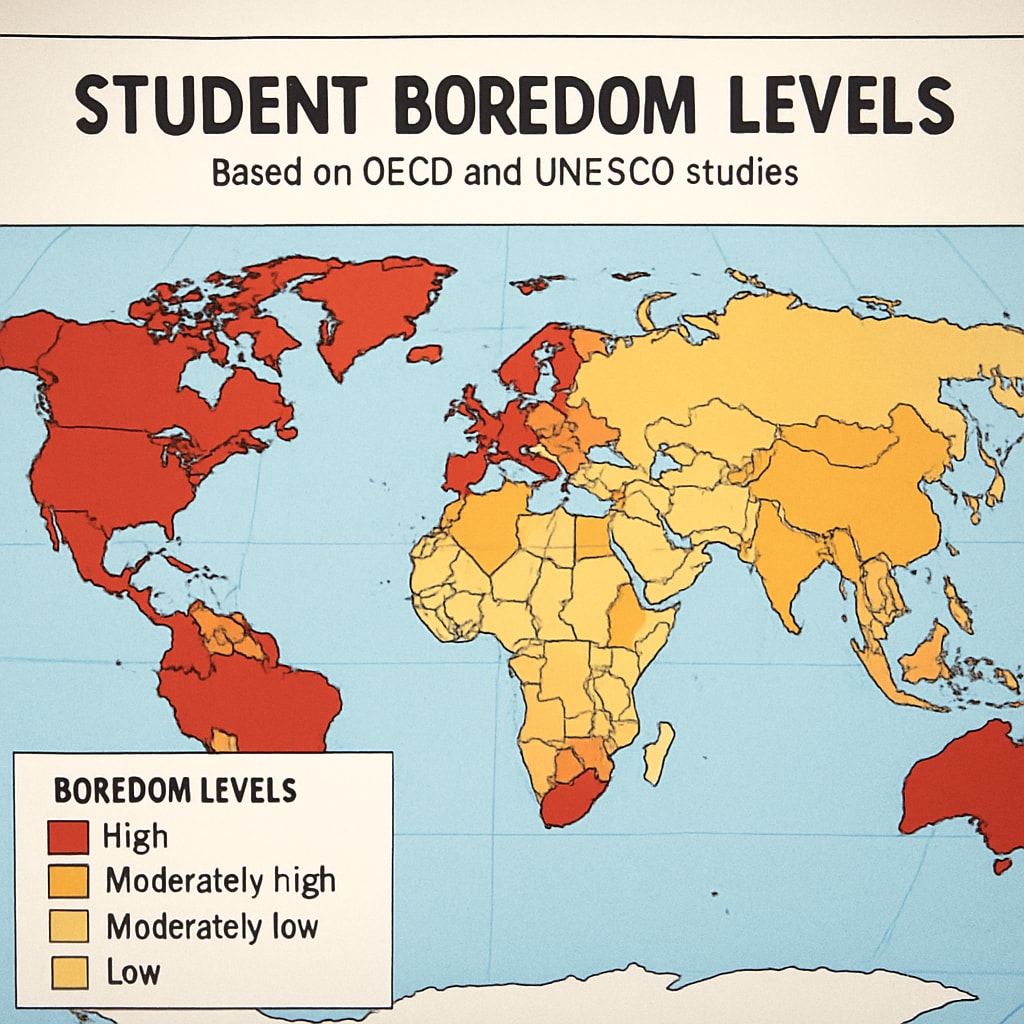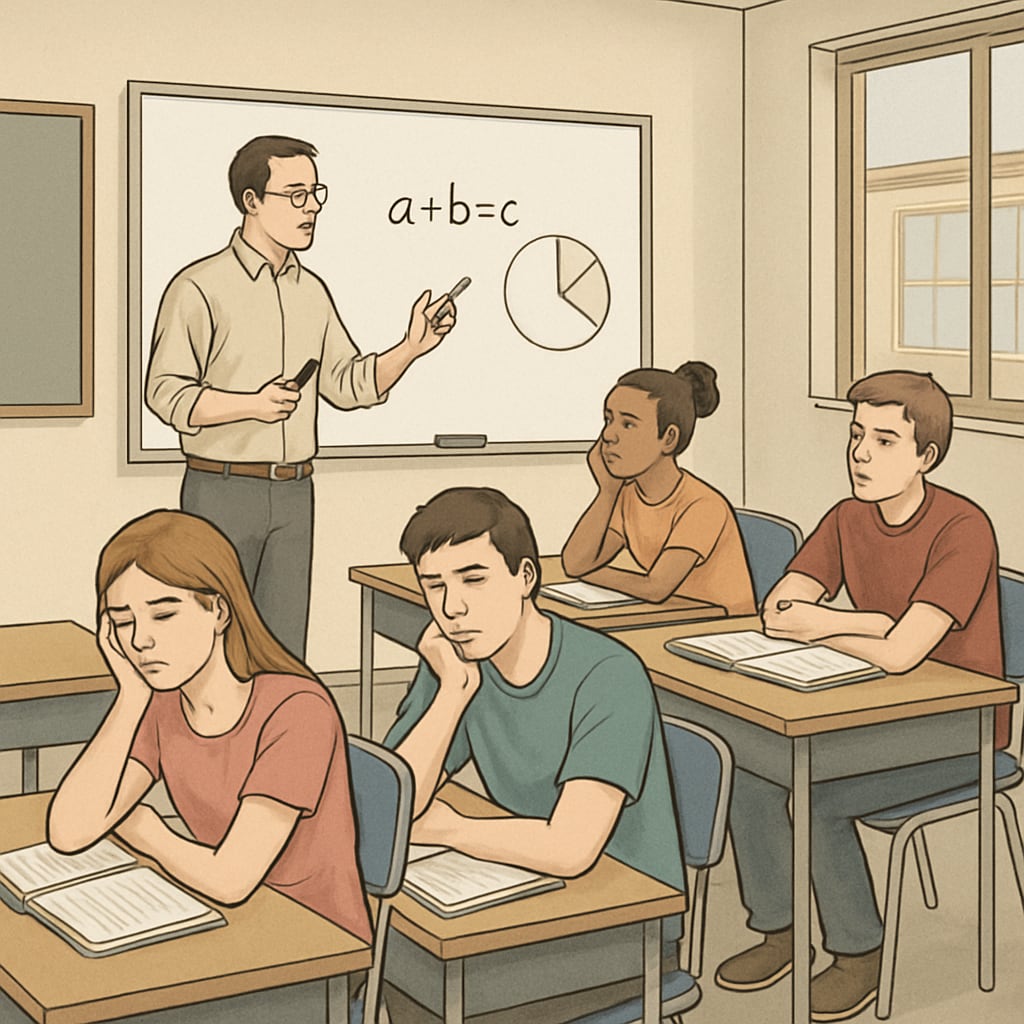Student boredom in K12 education environments has emerged as a universal concern, as highlighted by various cross-national studies. This phenomenon not only impacts the effectiveness of learning but also raises questions about how educational systems worldwide can adapt to better meet student needs. Through an analysis of global research data, we uncover the core causes of boredom, its consequences, and actionable strategies educators can adopt to create more engaging and dynamic learning experiences.
Understanding the Global Scope of Student Boredom
Recent cross-national studies have revealed an alarming trend: students across the globe consistently report feeling bored in the classroom. For example, a survey conducted by the OECD (Organisation for Economic Co-operation and Development) in 2018 found that over 60% of students from developed nations felt disengaged during lessons. In contrast, UNESCO’s research in developing nations indicated similar patterns, albeit with slight variations tied to cultural and infrastructural factors.

Boredom in educational environments is not only a psychological challenge but also a systemic issue. Factors contributing to boredom can range from rigid curriculums and lack of teaching innovation to insufficient attention to individual learning styles. As a result, students often feel disconnected from the material, leading to a decline in academic performance and overall motivation.
Main Causes of Student Boredom in K12 Classrooms
Several key factors have been identified as contributors to student boredom in K12 education:
- Lack of relevance: Students often struggle to connect their lessons to real-world applications, making the content appear abstract and uninteresting.
- Passive learning methods: Traditional lecture-based teaching fails to actively engage students, leaving little room for interaction or creativity.
- One-size-fits-all approach: Uniform curriculums do not accommodate diverse learning preferences, which can alienate students with unique needs.
- Technology gaps: Inadequate integration of modern tools and technology in classrooms can hinder engagement, especially for tech-savvy generations.
As a result, boredom becomes a barrier to effective learning, often leading to behavioral issues, absenteeism, and a lack of long-term interest in education.

Combatting Boredom Through Innovation and Personalization
To address the widespread issue of boredom, educators and policymakers are exploring innovative strategies to transform traditional teaching methods. Here are some approaches that have shown promise:
- Interactive learning: Incorporating group discussions, hands-on activities, and interactive digital tools can make lessons more engaging.
- Personalized education: Adapting teaching methods to cater to individual learning styles, such as visual, auditory, or kinesthetic, helps students feel more connected to the material.
- Gamification: Using game-based learning platforms to introduce competitive, reward-driven activities fosters engagement and enthusiasm.
- Real-world applications: Linking lessons to practical scenarios or current events enhances relevance and interest.
For example, Finland’s education system has gained global recognition for its focus on personalized and project-based learning. By prioritizing student autonomy and creativity, Finland has significantly reduced boredom levels while improving overall academic outcomes (Education in Finland on Britannica).
The Role of Technology in Reducing Student Boredom
Technology plays a critical role in bridging the gap between traditional teaching methods and the needs of modern learners. Digital platforms such as interactive learning apps, virtual reality (VR) tools, and adaptive learning algorithms allow teachers to create immersive and tailored educational experiences. For instance, VR simulations can transport students to historical events or scientific experiments, making abstract concepts tangible and engaging (Education technology on Wikipedia).
However, effective implementation requires proper training and resources for educators. Without these, technology risks becoming a distraction rather than a solution.
Conclusion: Building a More Engaging Global Educational Landscape
Student boredom in K12 education environments is a complex issue influenced by cultural, systemic, and technological factors. By leveraging innovative teaching methods, personalized strategies, and technology, educators can create classrooms that inspire curiosity and active participation. While challenges remain, the global efforts to address boredom are a promising step toward a more engaging and effective educational landscape that benefits students worldwide.
Readability guidance: The article uses short paragraphs, lists, and clear transitions to maintain readability. Passive voice and long sentences are minimized, while overuse of keywords is avoided to ensure natural flow.


